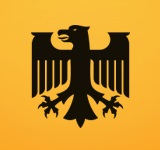
BLCO – NNPC FOB Procedures
BLCO is now available for FOB under strict procedures established from the NNPC through our NNPC approved seller. These procedures are not anything like CIF procedures.
FOB transactions are only available to very seasoned buyers like refineries. The buyer’s company profile is provided and part the seller’s allocation is re-allocated to the buyer.
This allows the buyer to see and verify his re-allocated allotment on the Shell Screen. This does not happen with CIF off-OPEC transactions – those are verified at the delivery terminal only by the contract holder.
The advantage is that the buyer can see his right to purchase prior to paying the lump sum for the product And because the buyer is paying for all the shipping fees up front he gets a bigger discount than with a CIF transaction where the seller or the NNPC approved Financier is paying for shipping.
The Buyer has to provide a letter of acceptance of these procedures along with providing his company profile. These procedures are strict – not negotiable.
All advance payments are made to the official NNPC account and receipted.
Here are the FOB NNPC procedures forwarded to our seller (in Quotes), our explanation follows:
NNPC FOB LIFTING PROCEDURE
1. Seller issues sales purchase agreement (SPA), Buyer/Seller sign SPA, parties to deposit Copies of the SPA with respective Banks
2. Buyer upon signing of the SPA forward their Certificate of Incorporation, and LOI to Seller.
This is the letter we spoke of above.
3. Sellers obtain lifter registration form to the buyer to enable the buyer fill and submit with his profile of company buying or refinery. ($7,150)
4. Buyer releases fund to Seller representative for programming of direct Allocation re-assignment is $340,540 dollar.
The NNPC requires a re-allocation to allow lifting by a non allotee. Non refinery buyers should have a purchasing track record, vessels and sufficient funds or the deal is dead.
All of these fees relate to a 2 million barrel transaction with one vessel.
5. NNPC program Allocation in Buyers favour and release documents to be verify with NNPC registered Agencies e,g POP,ATS, Certificate of Allocation, which can be confirm in NNPC Abuja and London Shell Screen.
This is just like a primary, OPEC transaction but is is the secondary market allowing refineries to supplement their feed stock with greater quantity or different quality products like BLCO which is especially useful for producing higher level products like gasoline. Refineries use stills with different level take-off valves thus a lighter product is literally a higher level product, the heavy take-off at the bottom and the lightest at the top.
All of the above documents are also given with a CIF transaction but with a CIF off-OPEC transaction are not verifiable on the shell screen or at Abuja but are verifiable at the loading terminal.
6. After positive verification of the Allocation where applicable Buyer will release, Valid CPA, Q88, ATL, and Chartered Invoice/Receipt or Proof of Ownership then and release Two Hundred and Forty Thousand US Dollars ($240,000) to Seller for Vessel Programming, loading logistic $140,000 and Clearance ($2m dollar), and $135,000 for confirmation to enable the issuance of Stem and Window to appear in Buyer’s name on Shell international screen, and world tabloids screen, for Buyer’s independent verifications.
This is where the buyer starts paying for all the shipping expenses, logistics and clearance to get his vessel into the loading terminal. Bonny Light is always loaded at the Bonny Terminal. Notice that the buyer has yet to pay for the product and this international posting allows a buyer from a foreign country to check validity without leaving home or for others like insurance companies that don’t have exclusive information to do diligence.
7. NNPC will Program Buyer’s Vessel at the Bonny Terminal for loading within 10 working days in favor of Buyer and forward the Laycan Details and Pin Code to Buyer, Vessels Owner and captain for confirmation in Shell/Lloyds screen registration in lifters/buyers name.
8. With Cargo and Laycan appearing in Buyer’s name and on Shell screen, within 72 hours Buyer’s Bank issues an operative Standby Letter of Credit, SBLC or Bank Guarantee.
This is the same as ATS and Allocation letters confirming legitimacy and triggering banking instruments in a CIF deal. The buyer’s bank issues a blocked funds instrument to allow the scheduled loading to occur. This is consistent with all Nigerian crude oil sales (there is always blocked funds required to load a vessel).
9. Within 72 hours (Banking days) upon receipt of confirmed Operative SBLC or BG, Vessel arrive Terminal and positions at the platform for loading and Seller load Vessel based on the Laycan with two million barrels (2M) of Nigerian light crude oil +-5% each and all loading Cargo Documents are forwarded to buyer in his name, cargo shall be inspected by the independent inspectors for Q&Q report by SGS, at lifters/buyer’s expense, then SGS shall release the Q&Q Reports to Seller and Buyer.
10. Seller will handed over to the Buyer, all original shipping’s documents and certificate of title Buyer in buyer’s name, according to the contract agreement.
11. Buyer confirms documents and release Payment via MT103 thru KTT to Seller’s account and other accounts in SPA.
Once again the buyer never pays for product in advance. The other accounts mentioned are usually spelled out in an IMFPA (Irrevocable Master Fee Payment Agreement). These are most often commissions that the agents and intermediaries involved in putting the buyer and seller together receive.
If you are a refinery employee or a mandate for a refinery and are interested in doing an FOB deal you can go to our form and send us a note.
Author:
Jeff Scott – CFO
Nigerian Oil Services LLC (USA)
Mandate for the Seller